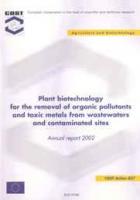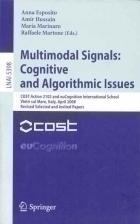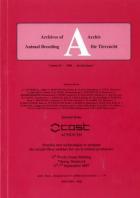
Urban Civil Engineering - Annual Activity Report to CSO

Coastal Benthic Ecology - Period Report 1985-1987

Weather Radar Networking - Status Reports

Plant Biotechnology for the Removal of Organic Pollutants and toxic Metals from Wastewaters and Contaminated Sites - Annual Report 2002

Atlas Historique des Cadastres d'Europe

PRO Ligno, Number 3, 2007

Multimodal Signals: cognitive and Algorithmic Issues
- Pages: 346
- Author(s): A. Esposito, A. Hussain, M. Marinaro and R. Martone
- Publisher(s): Springer
- http://www.springer.com/computer/artificial/book/978-3-642-00524-4
- ISBN/ISSN: 978-3-642-00524-4
This volume brings together the peer-reviewed contributions of the participants at the COST 2102 and euCognition International Training School on “Multimodal Signals: Cognitive and Algorithmic Issues”.
The main theme of the school was to investigate the mathematical and psychological tools for modelling human-machine interaction through access to a graded series of tasks for measuring the amount of adjustment (as well as intelligence and achievement) needed for introducing new concepts in the information communication technology domain in order to develop adaptive, socially enable and human-centered automatic systems able to serve remote applications in medicine, learning, care, rehabilitation, and for accessibility to work, employment, and information.

Archives of Animal Breeding - Possible New Technologies to Esti-mate the Muscle Fiber for Use in Animal Production
- Pages: 90
- Author(s): E. Von Borell, G. Brockmann, R. Claus, O. Distl et al.
- Publisher(s): Druck & Werbew-erkstatt
European meat and fish producers are continuously challenges for efficiency of production, animal welfare and meat/fish quality. In meat/fish production muscle growth is the most important trait of the production economy and the muscle growth rate may influence the quality of the meat produced. Muscle fibres are formed during foetal development, and number and hypertopic growth determines the growth rate of the animal to a large extent. The number of muscle fibre formed during foetal development is directly related to postnatal muscle growth.
However, because studies on the number of muscle fibres are tedious and costly it is important that research in this area is complementary instead of duplicating. An initiative was consequently taken to initiate a COST Action entitled 3The Importance of prenatal Events for Postnatal Muscle Growth in Relation to the Quality of Muscle Based Foods”.
This Special Issue of Archives of Animal Breeding contains the contributions of the participants to the sessions of the two working groups presented as one invited paper, 16 oral contributions and 20 posters that report on current scientific activities and results. Furthermore, a workshop on the relationship between gene expression and muscle fibre number was held followed by a plenary discussion.

International Workshop on Earthquake Engineering on Timber Structures
- Pages: 200
- Author(s): Dr. V. Enjily
- Publisher(s): University of Coimbra
Proceedings of the International Workshop on “Earthquake Engineering on Timber Structures”, which took place in Coimbra, Portugal on 9-10 November 2006.
